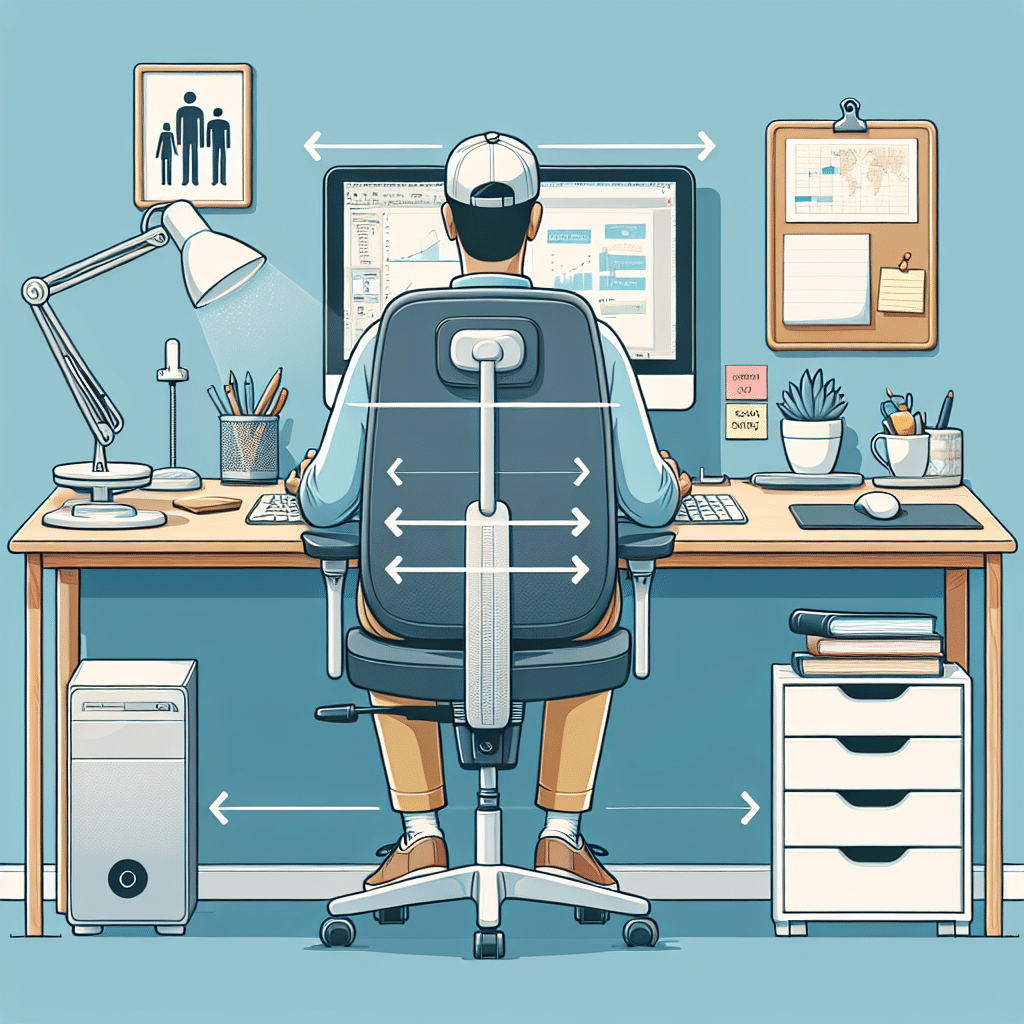In today’s digital age, creating an ergonomic workspace at home is essential for promoting well-being and productivity. An appropriately set up home office desk can significantly impact your posture, reducing the risks of discomfort and long-term health issues. Below are key components and tips to optimize your workspace for better posture.
Choosing the Right Desk and Chair
Desk Height
Your desk height should enable you to work comfortably without straining. Ideally, when seated, your elbows should be at a 90-degree angle, with your forearms parallel to the ground. The standard desk height ranges from 28 to 30 inches, but it’s crucial to consider your individual height. For shorter or taller users, adjustable desks can provide the needed flexibility.
Chair Selection
Invest in a high-quality ergonomic chair that supports your lumbar region. Look for chairs that offer adjustable height, depth, and backrest. Your feet should flatly remain on the floor or on a footrest, and your knees should be at or slightly below hip level.
Armrest Adjustments
Armrests are often overlooked, yet they play a vital role in maintaining proper arm positioning. Adjust your armrests so that your arms rest comfortably, alleviating strain on your shoulders. When your elbows are at a right angle, your wrists should remain straight without bending excessively.
Monitor Positioning
Eye Level Monitoring
Proper monitor height is paramount to excellent posture. The top of your screen should be at or slightly below eye level, allowing for a neutral neck position. If you are using a laptop, consider a laptop stand to achieve the desired height, pairing it with an external keyboard and mouse.
Distance from Eyes
Position your monitor about an arm’s length away from your eyes. This distance helps reduce eye strain and allows you to maintain a comfortable focus. For optimal viewing, tilt your screen slightly backward (10 to 20 degrees), preventing you from leaning forward.
Keyboard and Mouse Setup
Keyboard Height
Your keyboard should be placed at a height that keeps your elbows at an approximate 90-degree angle. A keyboard tray can be beneficial in achieving the right setup, ensuring that your wrists remain straight while typing.
Mouse Placement
Keep your mouse close to your keyboard to avoid overreaching. Both the keyboard and mouse should be on the same plane, requiring minimal wrist movement. Consider using a mouse pad with wrist support to maintain proper wrist alignment.
Lighting Considerations
Natural Light
Whenever possible, set your desk near a window to capitalize on natural light. Natural light boosts mood and productivity, but ensure your screen is positioned to minimize glare. Position your screen perpendicular to the window to reduce reflections.
Task Lighting
In addition to natural light, invest in a high-quality desk lamp. The lamp should offer adjustable brightness and focus to effectively illuminate paperwork without straining your eyes. Select LED bulbs that reduce eye fatigue, preferably with a color temperature between 4000K and 5000K.
Organizational Strategies
Desk Clutter Management
Keeping your desk organized not only enhances focus but also promotes better posture. Minimal clutter reduces distractions, allowing you to maintain a comfortable working position without hunching over paperwork or devices.
Cable Management
Use cable management solutions, such as clips and sleeves, to keep your workspace tidy. This approach ensures that you do not inadvertently pull or twist on cables, leading to awkward postures and potential discomfort.
Regular Breaks and Movement
Scheduled Breaks
Periodically standing up or stretching can dramatically improve your well-being. Aim for a 5-10 minute break every hour, walking around or performing light stretches. This movement helps combat stiffness and encourages blood flow.
Desk Exercises
Incorporate simple desk exercises designed to relieve tension. Try shoulder rolls, seated leg lifts, and neck stretches to activate various muscle groups. These movements promote flexibility and help maintain proper posture.
Technology and Ergonomic Aids
Standing Desks
Consider transitioning to a standing desk or a desk converter that allows you to alternate between sitting and standing. Standing while working can help engage core muscles, encouraging better posture.
Chair Cushions
For additional support, consider using lumbar cushions or seat pads. These aids can enhance comfort during long hours of sitting and help maintain the natural curve of your spine.
Screen Filters
If you experience eye strain, contemplate applying a blue light filter to your monitor. This filter protects your eyes from excessive blue light exposure, reducing fatigue associated with prolonged screen time.
Posture Awareness
Self-Monitoring
Cultivate an awareness of your posture throughout the day. Use reminders, such as sticky notes or phone alerts, to check your alignment. Mindfulness about maintaining an upright position helps encourage proper body mechanics.
Posture Adjustments
When sitting, ensure your back is adequately supported, and avoid slumping or leaning. Train yourself to retract your shoulder blades and maintain a relaxed neck position.
Final Thoughts on Ergonomics
Setting up your home office desk for optimal posture involves selecting the right furniture, properly positioning your monitor and accessories, and being mindful of your posture throughout the day. By paying attention to these details, you not only enhance your comfort but also create a productive work environment conducive to sustainable habits. Investing time in setting up your workspace can lead to healthier and more enjoyable workdays.
